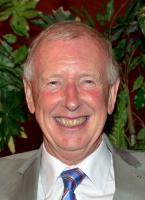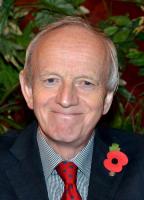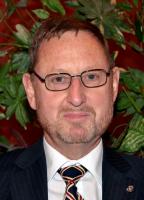Speaker Brian Gamble on Michelangelo
Wed, Oct 30th 2024 at 12:00 pm - 2:00 pm
Brian spoke briefly about the life and works of Michelangelo di Lodovico Buonarroti Simoni. Speaker Finder David Burrows, Visitors Host, Grace & Banners Barrie Birch, Cash Desk Geoff Brown
Brian who is a member of churches in Thackley spoke about Michelangelo di Lodovico Buonarroti Simoni. He was born in Caprese in 1475 to a family of small bankers in Florence, but the bank failed.
While he was still a baby the family moved to Florence as his mother had become too ill to look after him. He was moved into the care of nanny whose husband was a marble cutter which is what fired his interest in sculpting in that medium. At that time Florence was the centre of arts with Sandro Botticelli and Leonardo da Vinci both working there.
Aged 13 he was engaged by and apprenticed to Domenico Ghirlandaio who was a master fresco painter with a workshop in Florence. At the tender age of 14 he started to receive a salary for his work which was very unusual.
Hi favourite sculpture subjects were nude male bodies. In order to understand the layout of the human body he studied cadavers from the hospital of the local church.
During his time in Florence, he enjoyed the patronage of the Medici but when those rulers of Florence were overthrown in 1494 he left Florence for Venice and Bologna. He then returned to Florence a year later when the political climate had settled down but he was not able to get any commissions from the new rulers. So, he went to work for Medici again. But this time he was persuaded by one of the Medici to attempt a fraud by trying to make new sculpture of St. John the Baptist look old so that it could be sold as an antiquity commanding a much higher price. But Cardinal Riario who bought it discovered it was a fake and refused to pay for it. However, he was so impressed with Michelangelo’s work that he commissioned him to produce a sculpture of the Roman god of drink Bacchus. The Cardinal did not like the completed work as it showed Bacchus to be drunk, but a banker did buy it.
In 1497 the French ambassador to the Pope commissioned him to produce a sculpture of the Madonna grieving over the body of Christ which on its completion was highly praised and regarded as a masterpiece.
In 1499 he returned to Florence when the current ruler was executed. In1456 Agostino di Duccio had started work on large block marble to create a statue of David but stopped the work after only roughing it out. The owners of the marble sought to have the piece finished and having interviewed such luminaries as Leonardo da Vinci settled on Michelangelo to complete it. Once he completed it in 1504 it was supposed to go on Cathedral roof, but it was too heavy so over 4 days it was moved to Piazza della Signoria. After 300 years in 1873 it was found to be cracking because the soil underneath it was not stable, so it was moved to Gallery of the Academy of Florence.
In 1505 he moved back to Rome to undertake a commission to complete a tomb for Pope Julius II but because of constant interruptions from the Pope he moved back to Florence but was eventually persuaded to return to Rome to finish tomb. He worked on it for 40 years but was never happy with it.
During the same period, he was commissioned in 1508 to paint the ceiling of the Sistine Chapel. This major work incorporates 9 stories from the book of Genesis surrounded on the pendentives by 12 prophets who forecast the coming of Christ.
It is thought that around 1497 he started a painting of the Madonna which remains unfinished. Initially the artist was unknown, and it wasn’t until shown in Manchester in 1857 that it was finally attributed to Michelangelo. The painting can now be found in the National Gallery in London.
When the Medici came back into power, they gave him the death penalty, but he hid for 2 months under the Medici chapels in the Basilica of San Lorenzo. Eventually he was pardoned as they wanted him to finish the Medici tomb.
At the age of 71 he was commission to work on St. Peters Bassilica which was a replacement for Constantinian Basilica which had already been underway for 50 years.
He was a devout catholic all life. At his death his net worth was put at 50,000 gold ducats which made him richer than many Dukes and Princes.
 Contact David Burrows about this page:
Contact David Burrows about this page:
'What We Do' Main Pages:

Coming under Community this part of the group exists to undertake environmental projects on behalf of the club.
more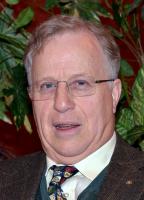
This committee provides the link with Rotary Internationals main charitable trust which primarily deals with projects having a global nature.
more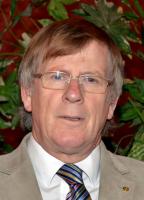
Rotary is not just about doing good deeds but also about enjoying yourself and this committee organises social activities. This page contains an archive of some of our activities.
moreThis committee works with the other committees to help them raise funds for their individual projects to support charities locally, nationally and internationally.
moreThis is the vehicle that donates the money that we have raised to the various good causes that we support. Its official name is The Rotary Club Of Bradford Blaize Trust Fund and its registered number with the Charity Commission is 514621.
moreThis committee organises social events and deals with the day to day running of the club.
moreThis committee exists to provide PR and communications between the members and also to provide links to non members through the web site and Facebook.
more
